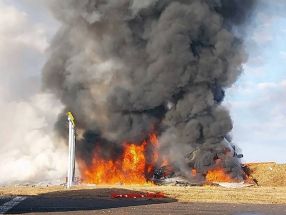Scientists: "Doomsday Clock" reflects grave threat to world
PALO ALTO - Rising tension between Russia and the US, North Korea's recent nuclear test and a lack of aggressive steps to address climate change are putting the world under grave threat, scientists behind a "Doomsday Clock" that measures the likelihood of a global cataclysm said yesterday.
The Bulletin of the Atomic Scientists announced that the minute hand on the metaphorical clock remained at three minutes-to-midnight. The clock reflects how vulnerable the world is to catastrophe from nuclear weapons, climate change and new technologies, with midnight symbolizing apocalypse.
"Unless we change the way we think, humanity remains in serious danger," said Lawrence Krauss, chair of the bulletin's Board of Sponsors.
Krauss said the Iran nuclear agreement and Paris climate accord were good news. But the good news was offset by nuclear threats, including tension between nuclear-armed states India and Pakistan, and uncertainty that the Paris accord will lead to concrete action to reduce greenhouse gas emissions.
The scientists behind the bulletin adjusted the clock from five minutes-to-midnight to three minutes-to-midnight last year, the closest to midnight it has been since 1983. They cited climate change, modernization of nuclear weapons and outsized nuclear weapons arsenals as "extraordinary and undeniable threats to the continued existence of humanity."
California Gov. Jerry Brown joined former US Secretary of State George Shultz and former US Secretary of Defense William Perry for a discussion at Stanford University after the unveiling of the clock.
Perry raised concerns about rhetoric from Russia about the use of nuclear weapons and said the threat of nuclear disaster was greater today than during the Cold War. Shultz said the US needs to engage Russia and China. Brown warned about "tipping points" in the fight against climate change.
"And around a tipping point, we may not be able to come back to a stable planet or one we'll find very comfortable to live in," he said.
The Bulletin of the Atomic Scientists was founded in 1945 by University of Chicago scientists who helped develop the first atomic weapons. The clock was created two years later.
The decision to move or leave the clock alone is made by the bulletin's science and security board, which includes physicists and environmental scientists from around the world, in consultation with the bulletin's Board of Sponsors, which includes more than a dozen Nobel laureates.
The closest the clock has come to midnight was two minutes away in 1953, when the Soviet Union tested a hydrogen bomb that followed a US hydrogen bomb test.
- Latest
- Trending
































